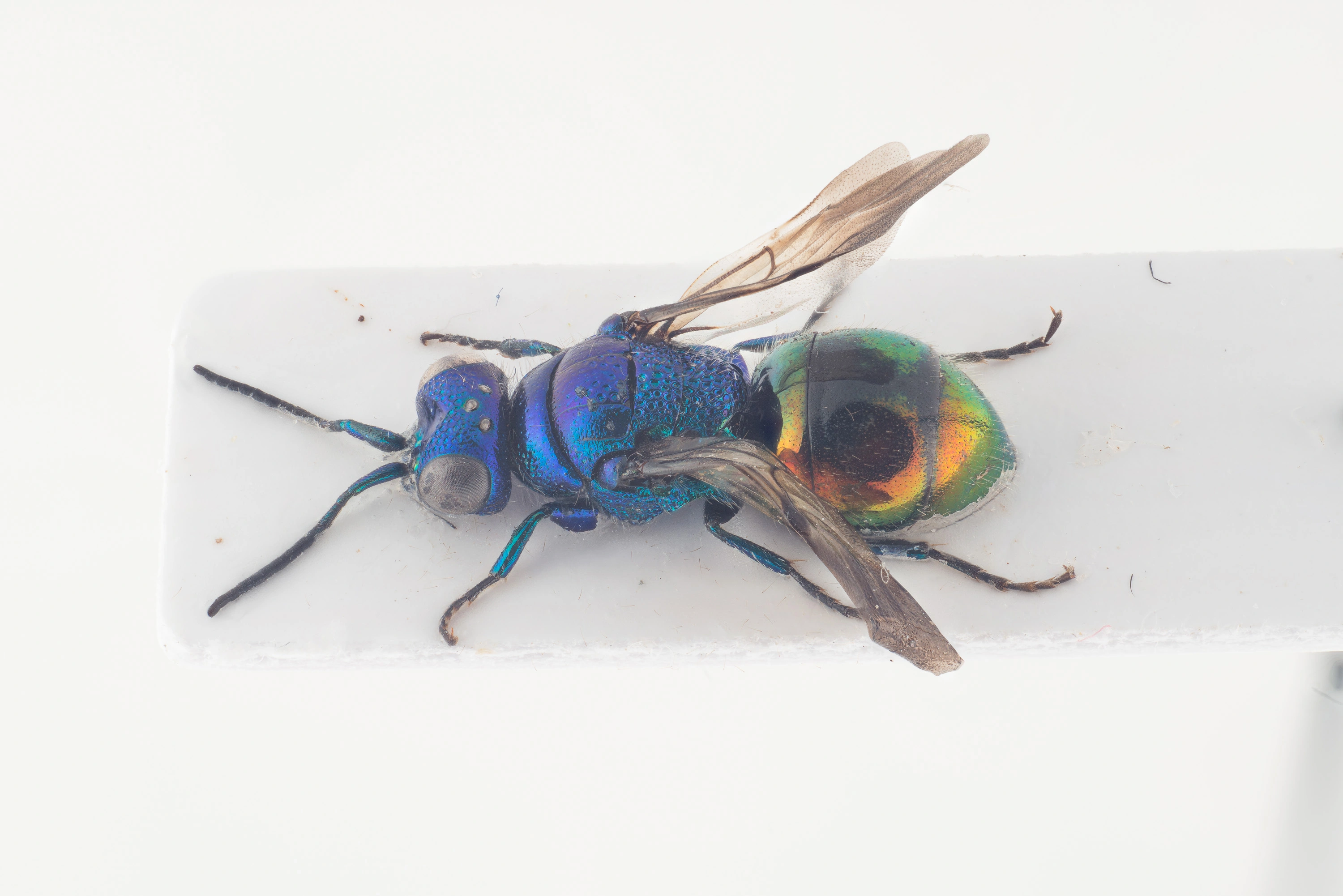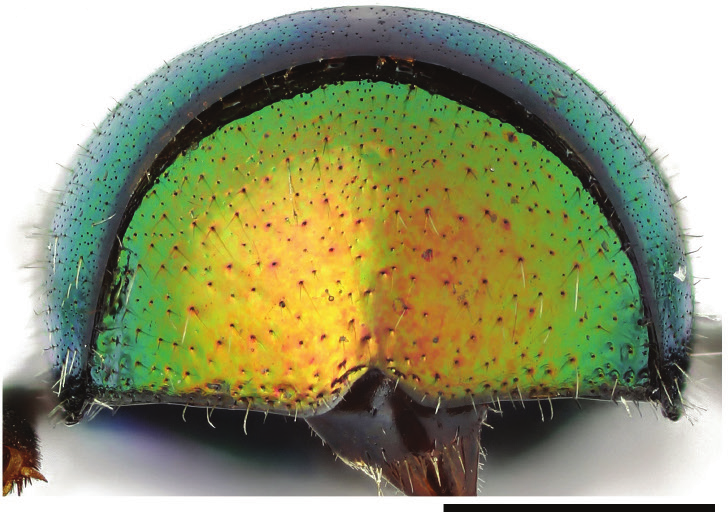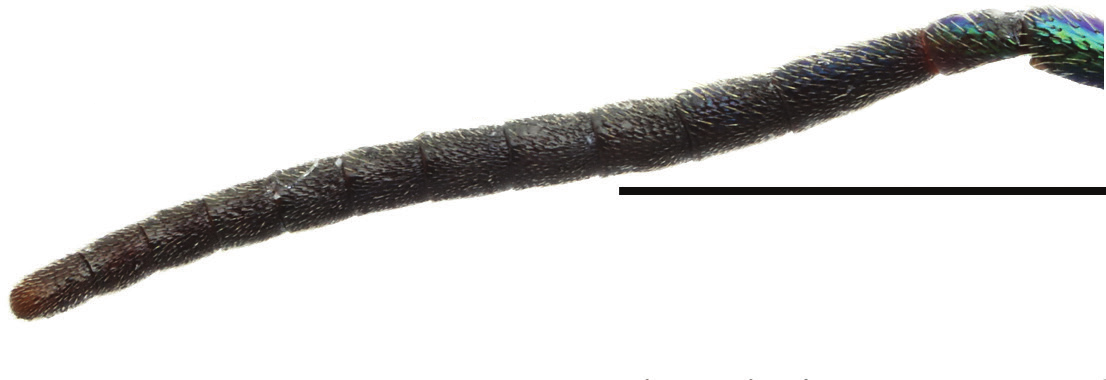Pseudomalus triangulifer
A relatively rare species found in places with shruby vegetation and large amounts of dead wood. The hosts are wood living Crabronidae in the genus Pemphredon. The species is easily confused with Pseudomalus auratus, but P. triangulifer is larger, have longer antennae, and a more triangle shaped apical notch of T3.
- Innhold
- Diagnosis
- Distribution
- Biology
Diagnosis
Figure 2
Tarsal claw: Pseudomalus triangulifer.
Figure 31
T3, postero-dorsal view: P. triangulifer ♀. Scale 1 mm.
Figure 34
Antenna: P. triangulifer ♀. Scale 1 mm.
Length 6–7 mm.
The species resembles closely P. auratus, but the antennal segments are longer (Fig. 34), the body is usually larger and the shape of the apical notch of T3 is shallower and more triangular (Fig. 31). The colour of the metasoma varies from mostly red to almost green. The darkest specimens can be somewhat similar to P. violaceus, but the apical notch is always deeper in P. triangulifer.
Distribution
Denmark, Estonia, Finland, Latvia, Lithuania, Norway, Sweden. Relatively rare.
Trans-Palearctic: from Europe and Turkey to China (Linsenmaier 1959, 1968, Rosa et al. 2014).
Be aware that the records present in the GBIF map may be misleading for some countries due to unrevised data sets or missing information.
GBIF Taxon: Pseudomalus triangulifer (Abeille, 1877)Biology
Habitat: forest margins and clearings, gardens and parks. Often collected from sun-exposed leaves of trees and bushes. Adults are attracted to honeydew of aphids and occasionally also to flowers of Apiaceae and Euphorbiaceae (Linsenmaier 1997).
Flight period: late April to August.
Host: Passaloecus insignis (Vander Linden), Pemphredon lugubris (Fabricius), P. lethifer (Shuckard), P. lugens Dahlbom, P. montana Dahlbom and P. rugifer (Dahlbom) (Crabronidae) (Alfken 1915, Strumia 1996, Wickl 2001, Veenendaal 2011, our own obs.). Females probably oviposit in aphids before they have been captured and brought to the nest by the host (Veenendaal 2011).



